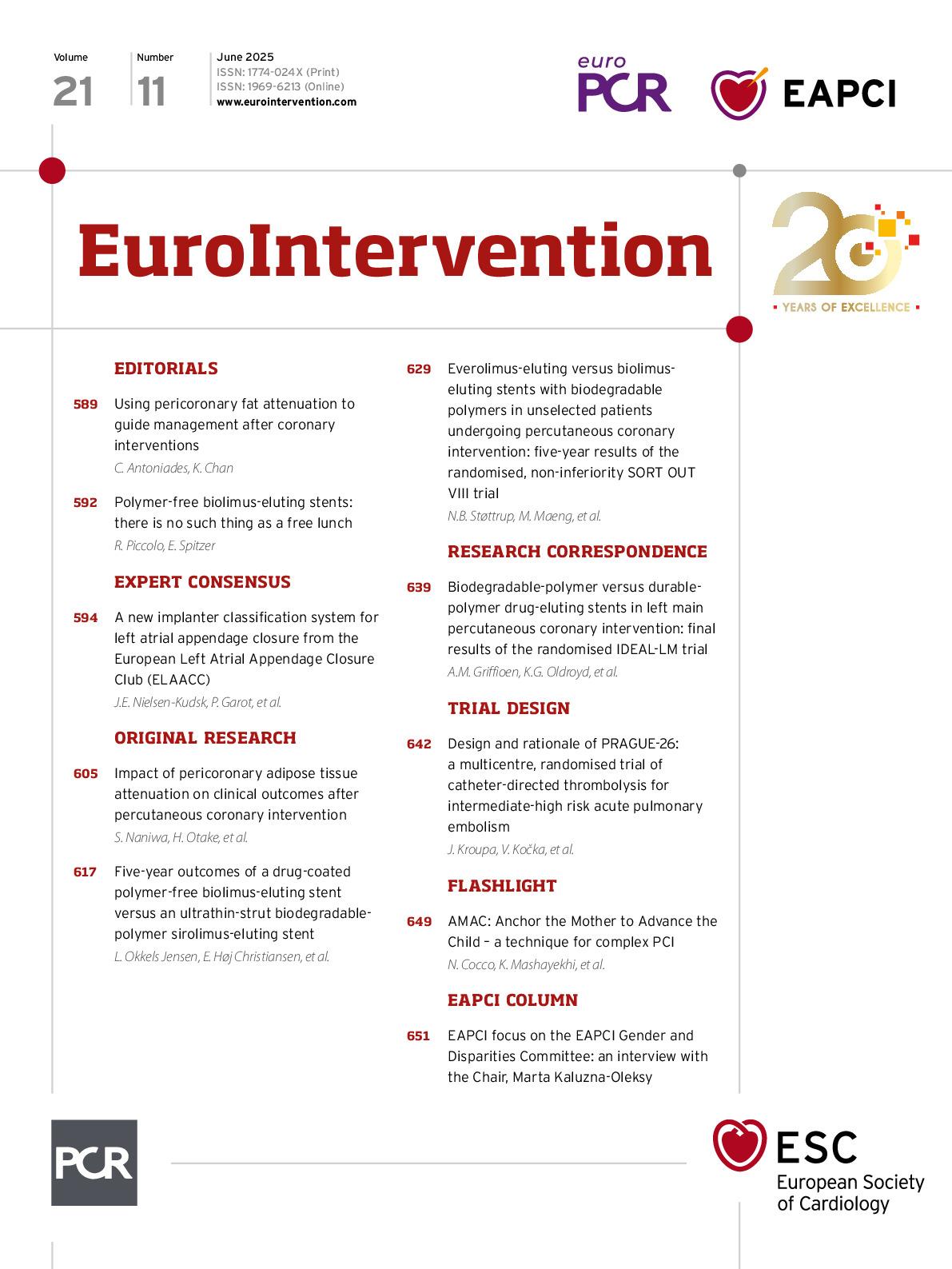Contemporary coronary intervention strategies primarily focus on anatomical obstructions and physiological flow limitations. In the context of chronic coronary syndromes, increasing clinical evidence has demonstrated that revascularising flow-limiting coronary obstructions does not substantially reduce the risk of myocardial infarction or cardiac death. Furthermore, rehospitalisation due to a new acute coronary syndrome frequently occurs within the first year from a percutaneous coronary intervention (PCI) targeting flow-limiting plaque disease1. This underscores the unmet need to identify the non-obstructive vulnerable plaques, which could be treated to improve clinical outcomes, as demonstrated in the recent PREVENT trial2.
Inflammation is a critical process in both the development and rupture of atherosclerotic plaques3. Among patients undergoing routine clinical coronary computed tomography angiography (CCTA), coronary inflammation can be non-invasively detected by mapping the radiological changes in the perivascular adipose tissue, and quantified using the fat attenuation index (FAI)-Score45. Indeed, the FAI-Score measured around any coronary artery demonstrated significant prognostic value among patients with or without obstructive coronary atherosclerosis in the ORFAN study6. Previous studies have demonstrated that pericoronary FAI7, or even...
Sign up for free!
Join us for free and access thousands of articles from EuroIntervention, as well as presentations, videos, cases from PCRonline.com

